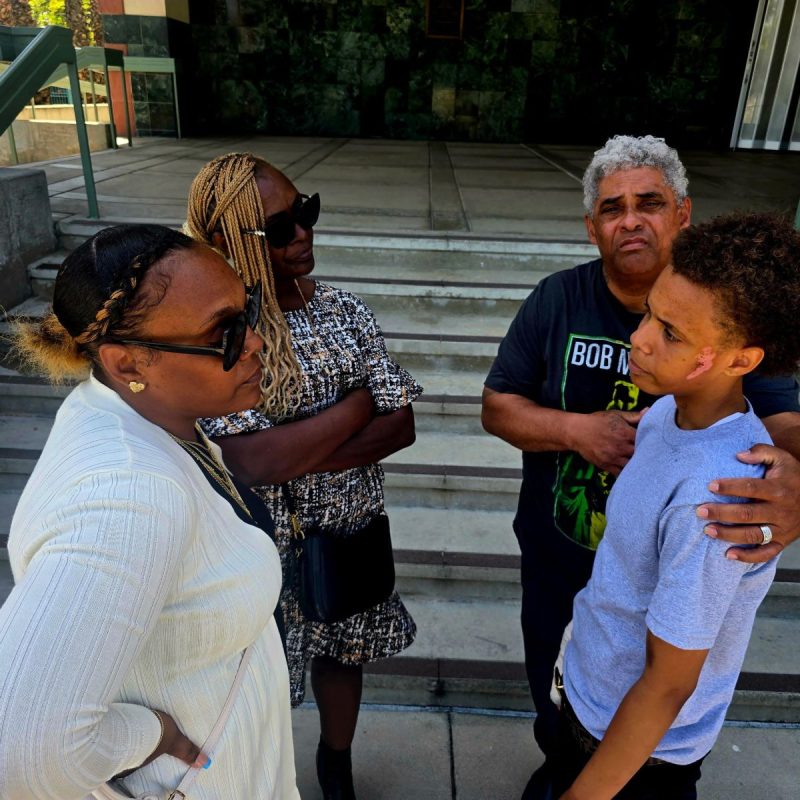
A recent viral video depicting a San Bernardino police officer violently throwing a 17-year-old Black girl, identified only as Erin, to the ground while she was partially handcuffed has ignited outrage and renewed calls for police reform. Erin sustained significant injuries, including a deep cut to her chin requiring stitches, a facial abrasion, and bruising. Her family claims the incident stemmed from a confrontation involving other teenagers inside a Food4Less supermarket, and that Erin was unjustly targeted.
The San Bernardino Police Department (SBPD) maintains that Erin resisted arrest, necessitating the use of force. However, activists and civil rights leaders, including Najee Ali, strongly dispute this claim, citing a video that seemingly contradicts the police account. Ali points to the SBPD’s history of alleged racism and abuse against minority communities, stating that the department’s self-investigation cannot be trusted and that their statement absolves the officer and blames the victim.
This incident is not an isolated case. In June 2024, another SBPD officer was caught on video repeatedly striking a gas station clerk, Billy Hill, with a baton, resulting in leg fractures. While the officer faced discipline, the incident highlights a recurring pattern of alleged excessive force. Hill’s lawyers claim he was not committing a crime and was subjected to aggressive and excessive force from the officers. The SBPD released body camera footage, but this footage has been interpreted differently by both parties involved.
The case of Erin echoes a similar incident in September 2023, where 16-year-old Faith Jeffers suffered traumatic injuries after being violently thrown to the ground by a San Bernardino County Sheriff’s deputy. These incidents, occurring over a short period, raise serious questions about the training, accountability, and potential racial bias within law enforcement in the San Bernardino area.
Earl Ofari Hutchison, president of the Los Angeles Urban Policy Roundtable, argues that addressing police brutality against young people of color requires strong discipline, suspensions, dismissals, and prosecution of officers who use excessive force. He emphasizes the persistence of racial stereotypes that fuel this kind of targeting. He also criticizes the lack of accountability from state-level officials, alleging negligence in pursuing cases against abusive officers. Hutchison notes that officers who brutalize individuals from minority communities rarely face consequences.
Erin’s family has requested an independent investigation by California Attorney General Rob Bonta. The ongoing debate underscores the urgent need for greater transparency, accountability, and meaningful police reform to prevent future incidents of alleged brutality and ensure justice for victims.
The question remains: will the repeated allegations of police misconduct in San Bernardino lead to substantial changes in policing practices, or will these troubling events continue to be a pattern rather than an exception?










